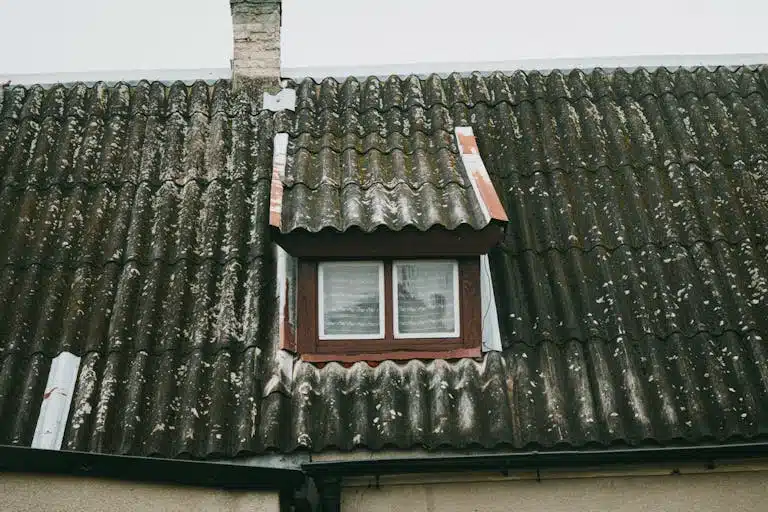Asbestos, once a cornerstone of UK construction, is now notorious for its severe health risks, including mesothelioma and lung cancer. Workers in construction, maintenance, and demolition, particularly those handling buildings constructed before 2000, need to understand what asbestos is, its properties, historical uses, and dangers. This guide answers the question, “What is asbestos?” and provides essential insights into its risks, exposure sources, and legal implications for UK workers, ensuring they stay informed and safe.
What is Asbestos? Understanding the Material
Asbestos is a group of six naturally occurring silicate minerals known for their strength, heat resistance, and insulating properties. These minerals—chrysotile, amosite, crocidolite, tremolite, anthophyllite, and actinolite—were widely used in construction and manufacturing due to their durability and ability to withstand high temperatures. In the UK, asbestos was a popular building material from the 1950s to the 1980s, found in everything from insulation to roofing. However, when disturbed, asbestos releases microscopic fibres that, when inhaled, can cause severe health issues. For more details, visit HSE Asbestos Overview.
Historical Use of Asbestos in the UK
Asbestos was extensively used in the UK until its dangers became widely recognised, leading to a complete ban in 1999. During its peak, it was incorporated into a variety of construction materials due to its fire-resistant and insulating qualities. Common uses included insulation for pipes and boilers, roofing sheets, floor tiles, textured wall coatings (like Artex), and cement products such as water tanks and gutters. Buildings constructed or refurbished before 2000, including schools, hospitals, offices, and homes, are likely to contain asbestos-containing materials (ACMs). The Health and Safety Executive (HSE) estimates that over 1.5 million UK buildings still contain asbestos. Learn more at UKATA Asbestos Information.
Key Fact: The UK’s heavy reliance on asbestos during the 20th century has made it one of the leading countries for asbestos-related diseases, with over 5,000 deaths annually.
Health Risks of Asbestos Exposure
When asbestos fibres are inhaled, they can lodge in the lungs or other tissues, causing inflammation and scarring that lead to serious diseases. The most severe is mesothelioma, a rare and aggressive cancer affecting the lung (pleural mesothelioma) or abdominal lining (peritoneal mesothelioma). Symptoms, such as chest pain, shortness of breath, or abdominal swelling, often appear 20–50 years after exposure, complicating early diagnosis. Asbestosis, a chronic lung disease causing breathing difficulties, and asbestos-related lung cancer are other risks, particularly for smokers. The HSE reports approximately 2,500 new mesothelioma cases yearly. For detailed health information, see Mesothelioma UK or Cancer Research UK.
Where is Asbestos Found Today?
Asbestos remains a significant hazard in UK buildings constructed or refurbished before 2000. Workers in construction, maintenance, or demolition may encounter ACMs in:
- Insulation: Used in pipes, boilers, lofts, and ductwork for thermal or acoustic purposes.
- Asbestos Cement: Found in roofing sheets, gutters, downpipes, and water tanks.
- Textured Coatings: Applied in decorative finishes like Artex on walls and ceilings.
- Flooring Materials: Present in vinyl tiles and linoleum backing in older buildings.
- Roofing and Cladding: Used in corrugated sheets and exterior panels.
Disturbing these materials during renovations or repairs can release fibres, posing immediate risks. For practical identification tips, visit HSE Asbestos Essentials.
Legal Protections and Asbestos Regulations
The Control of Asbestos Regulations 2012 governs asbestos management in the UK. Employers must identify potential ACMs, assess risks, and implement controls before work begins in older buildings. Workers have a right to information about asbestos hazards on their sites and must avoid disturbing ACMs without proper precautions. Non-compliance can result in significant fines or legal action, emphasising the need for awareness. These regulations protect workers in high-risk trades like plumbing, electrical work, and demolition, where accidental exposure is common.
How to Minimise Asbestos Exposure Risks
Preventing asbestos exposure requires caution and knowledge:
- Assume Asbestos Presence: Treat suspect materials in pre-2000 buildings as hazardous until tested.
- Avoid Disturbance: Refrain from drilling, cutting, or sanding potential ACMs without expert assessment.
- Use Protective Equipment: Wear appropriate PPE in high-risk areas, as advised by safety guidelines.
- Consult Professionals: Stop work and contact licensed asbestos specialists if ACMs are suspected.
- Stay Informed: Regularly review resources from HSE or UKATA to understand asbestos risks.
These measures help protect workers’ long-term health, particularly in industries prone to exposure.
Support for Asbestos-Related Diseases
For those diagnosed with mesothelioma or other asbestos-related conditions, support is available. Mesothelioma UK offers resources on treatment, clinical trials, and patient care. Compensation schemes, such as the Diffuse Mesothelioma Payment Scheme, may provide financial support for workplace exposure. Early diagnosis through medical screening can improve outcomes, making awareness of symptoms vital. Explore support at Mesothelioma UK Support.
Staying Informed About Asbestos
Given the long latency of asbestos-related diseases, ongoing education is crucial for workers in at-risk industries. Regularly checking updates from the HSE, UKATA, and health organisations ensures awareness of evolving risks and regulations. Understanding what asbestos is and where it’s found empowers workers to make safer decisions, especially in older buildings.
Learn More with Skilltopia
To deepen your understanding of asbestos risks, consider Skilltopia’s Asbestos Awareness Category A Course. Certified by The CPD Service and audited by the IATP, this online course costs £15 plus VAT and offers flexible learning to meet UK regulations. Earn a CPD certificate upon completion to enhance your safety credentials. Visit Skilltopia for more details.





